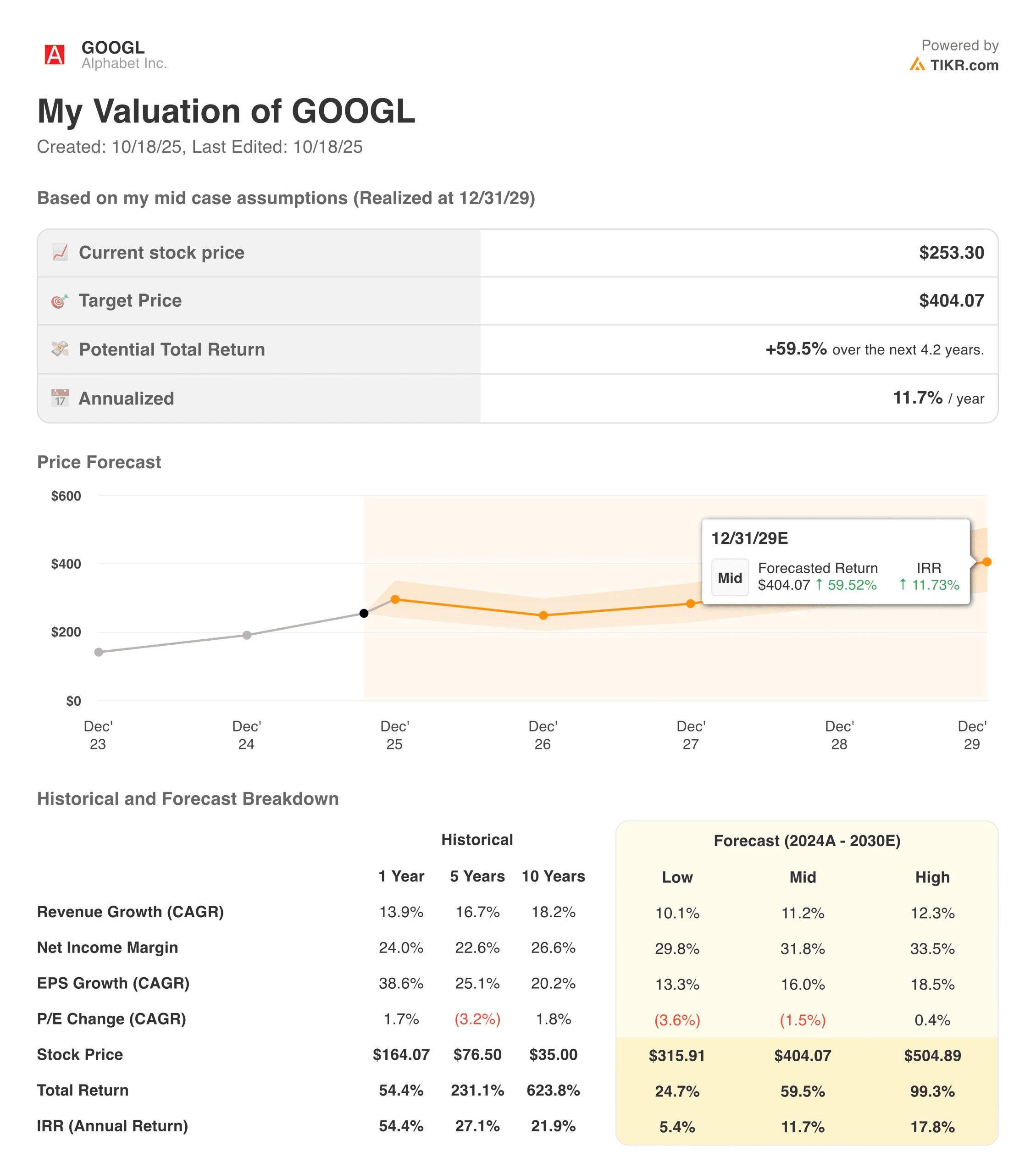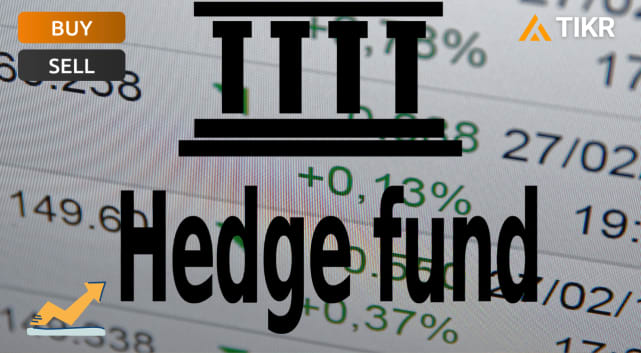Every investor wants to know the same thing: Is this stock cheap or expensive? It’s one of the hardest questions to answer, not because the math is complicated, but because the context matters. A company trading at 20 times earnings could be wildly overvalued or deeply undervalued depending on its growth, margins, and cash flow. The key is comparing valuation with reality, and the right tools make that possible.
Modern stock valuation doesn’t require a finance degree or hours in Excel. With a few well-chosen platforms, you can see how a stock is priced relative to history, peers, and fundamentals, all in minutes. These tools help you move beyond price-to-earnings headlines and into a complete understanding of what drives a company’s worth.
At the center of this workflow is TIKR, which consolidates institutional-quality data into one clean interface. From there, tools like Morningstar, Finbox, and others can add layers of perspective, from intrinsic value estimates to sector averages. Used together, they help investors see not just what a stock costs, but what it’s really worth.
1. TIKR – Value Any Stock in Under a Minute
If you only use one tool for stock valuation, make it TIKR. With TIKR’s new Valuation Model, you can estimate a company’s fair value in under a minute.
All it takes is three simple inputs:
- Revenue Growth
- 2. Operating Margins
- Exit P/E Multiple
If you’re not sure what to enter, TIKR automatically fills in each input using analysts’ consensus estimates, giving you a quick, reliable starting point.
From there, TIKR calculates the potential share price and total return for the stock under Bear, Base, and Bull scenarios.
You can instantly compare your assumptions with Wall Street’s analyst estimates and decide whether the stock looks undervalued or overvalued.
Whether you’re analyzing blue chips, growth stocks, or small-caps, TIKR’s Valuation Model helps you value stocks in less than 60 seconds so you can spend less time crunching numbers and more time finding great businesses.
Value stocks in less than 60 seconds with TIKR’s new Valuation Model tool (It’s free) >>>

TIKR brings together everything you need to analyze a company’s worth: historical valuation ratios, financial statements, competitor comparisons, and free cash flow, all in one intuitive interface. It’s like having a professional research terminal built for individual investors.
TIKR’s Multiples tab is also especially powerful. It lets you benchmark a company’s valuation metrics against the competition to see whether it deserves its current premium or discount. For example, a software company trading at 18x EBITDA might look expensive until you see competitors averaging 25x.
Find a stock’s intrinsic value and peer-based value with TIKR >>>
2. Morningstar – A Trusted Source for Fair Value Estimates
Morningstar has long been a go-to resource for fundamental investors, and for good reason. Its analyst-driven “Fair Value” estimates and star ratings offer a quick way to gauge whether a stock is undervalued or overvalued relative to Morningstar’s internal model. While some features require a premium subscription, the free tier still provides access to valuation metrics, financial summaries, and key ratios.
What makes Morningstar useful is its focus on intrinsic value. Rather than just comparing multiples, it uses discounted cash flow (DCF) models to calculate a fair value per share, effectively estimating what a company is truly worth based on its future cash flows. For long-term investors, it’s a good gut check against market price.
Use Morningstar for a second opinion:
- Check the “Price vs Fair Value” estimate against the stock’s current price.
- Review historical P/E and price-to-book trends.
- Pair with TIKR to cross-verify ratios and financial strength. It’s a great complement to TIKR’s quantitative depth, providing a human layer of qualitative insight.
3. Finbox – A Toolkit for Intrinsic Valuation Models
Finbox is another excellent platform for investors who like DCFs, comparables, and sensitivity analysis. It provides pre-built valuation models that combine market and fundamental data, making it easy to visualize how small changes in growth, margins, or discount rates can affect fair value.
Even in the free version, Finbox offers fair value ranges, key multiples, and data exports for deeper modeling. Where TIKR shines in financial visualization and peer comparison, Finbox stands out for its scenario-driven approach. You can adjust assumptions, run quick tests, and see how valuation shifts if revenue grows 10% faster or margins compress 200 basis points.
A simple workflow:
- Open Finbox → search your ticker → view its “Fair Value” estimate.
- Review the built-in models (DCF, EBITDA multiple, revenue multiple).
- Compare those outputs to TIKR’s historical multiples and cash flow trends. Together, they create a complete feedback loop between data-driven and model-driven valuation perspectives.
4. Simply Wall St – Visual Storytelling for Fundamentals
For investors who prefer a visual, narrative-driven approach, Simply Wall St offers one of the most user-friendly valuation overviews on the web. Its signature “snowflake” graphic summarizes a stock’s health, valuation, future growth, and financial stability at a glance, making it perfect for beginners or visual learners who want the big picture before diving into the details.
The platform estimates intrinsic value using a simplified DCF model and compares it to the current price. It also highlights key financials, dividend forecasts, and insider activity. While some data is paywalled, the free tier covers most of the essentials.
Use it to supplement, not replace, your analysis:
- Check whether a stock’s “Value” rating aligns with TIKR’s historical multiples.
- Look at “Future Growth” to see whether the valuation premium is justified.
- Cross-check insider trends with TIKR’s Ownership tab for context. Simply Wall St makes valuation approachable, and when paired with TIKR, you get the visuals and the numbers.
Quickly find undervalued stocks with TIKR (It’s free) >>>
5. Alpha Spread – Comparing Market and Intrinsic Value
Alpha Spread is an underrated but powerful tool for understanding valuation ranges. It uses machine learning and traditional valuation methods (DCF and relative valuation) to estimate a company’s “intrinsic value,” providing both a base case and a range of outcomes. The visual layout, with a meter showing how far above or below fair value a stock trades, makes it especially intuitive.
Its greatest strength is transparency: you can see exactly which assumptions drive the model, and how adjusting growth or discount rates shifts the result. That’s ideal for investors who want to understand not just the number, but the story behind the number.
How to use it alongside TIKR:
- Find a company’s fair value estimate on Alpha Spread.
- Compare it with TIKR’s valuation history and peer multiples.
- If both tools show consistent undervaluation, you’ve likely found a strong candidate for deeper research. Alpha Spread makes valuation feel less abstract, grounding every estimate in real-world data and assumptions.
TIKR Takeaway
At the end of the day, every good valuation process starts with TIKR. It’s the tool that connects the numbers to what actually matters, helping you see how a company’s valuation has changed over time, how it stacks up against competitors, and whether the current price makes sense.
Whether you’re looking at a reliable dividend stock or a fast-growing tech name, TIKR makes it easy to figure out if it’s really worth what the market’s paying.
You get multi-year financials, peer comparisons, and valuation history all in one place, so you can skip the messy spreadsheets and focus on understanding the business. Instead of guessing if something’s “cheap” or “expensive,” you can see what’s actually driving the valuation and why the market might be getting it wrong.
Valuing a stock will always take judgment. But with TIKR, that judgment comes from data, not gut feel.

Value stocks quicker with TIKR (It’s free) >>>
AI Compounders With Massive Upside That Wall Street Is Overlooking
Everyone wants to cash in on AI. But while the crowd chases the obvious names benefiting from AI like NVIDIA, AMD, or Taiwan Semiconductor, the real opportunity may lie in the AI application layer, where a handful of compounders are quietly embedding AI into products people already use every day.
TIKR just released a new free report on 5 undervalued compounders that analysts believe could deliver years of outperformance as AI adoption accelerates.
Inside the report, you’ll find:
- Businesses already turning AI into revenue and earnings growth
- Stocks trading below fair value despite strong analyst forecasts
- Unique picks most investors haven’t even considered
If you want to catch the next wave of AI winners, this report is a must-read.
Click here to sign up for TIKR and get your free copy of TIKR’s 5 AI Compounders report today.
Looking for New Opportunities?
- Discover which stocks billionaire investors are purchasing, so you can follow the smart money.
- Analyze stocks in as little as 5 minutes with TIKR’s all-in-one, easy-to-use platform.
- The more rocks you overturn… the more opportunities you’ll uncover. Search 100K+ global stocks, global top investor holdings, and more with TIKR.
Disclaimer:
Please note that the articles on TIKR are not intended to serve as investment or financial advice from TIKR or our content team, nor are they recommendations to buy or sell any stocks. We create our content based on TIKR Terminal’s investment data and analysts’ estimates. Our analysis might not include recent company news or important updates. TIKR has no position in any stocks mentioned. Thank you for reading, and happy investing!








